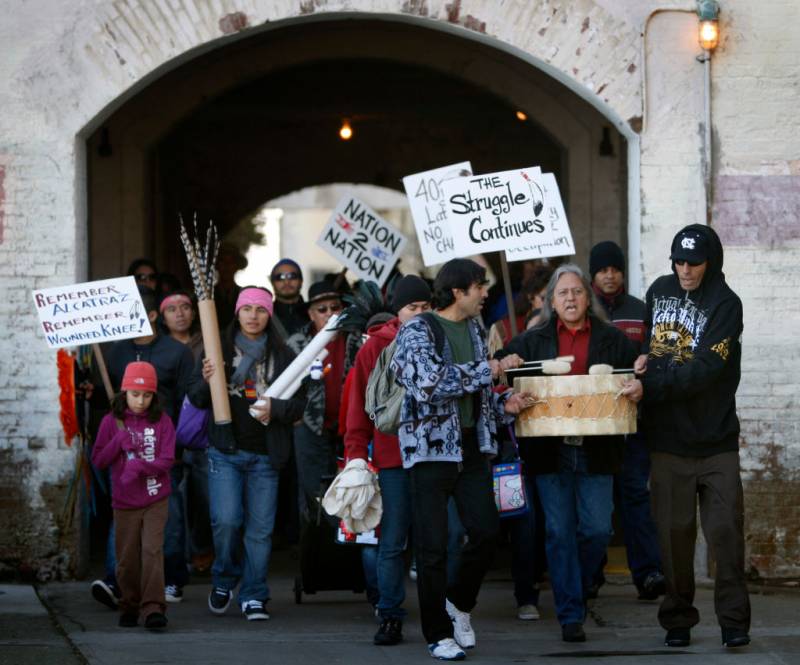The proposal comes amid a growing landback movement to return Native American homelands to the descendants of those who lived there for millennia before European colonizers arrived.
Aside from buying land, tribes in California could use the money for programs that address climate change and workforce development.
“Nature is needed in this effort to combat climate change,” Crowfoot said during a meeting of the California Truth and Healing Council, established by Newsom in 2019 to “clarify the record” of the “troubled relationship between tribes and the state.”
Crowfoot said that preserving land would allow more plants and soil to “actually absorb that pollution from the atmosphere and store it in the land.”
Tribal leaders were enthusiastic about Newsom’s proposal, but worried about how it would work in practice. In some cases, tribes have competing claims over the same land. Deciding who would get the money to purchase that land would be difficult.
“Gov. Newsom’s proposal to give California Native American tribes funding to help support tribal based initiatives around climate change and land conservation is a step in the right direction to give tribes the resources they need to continue their role as traditional stewards of their homelands,” said Sharaya Souza, executive director and co-founder of the American Indian Cultural District in San Francisco in an email.
“On a local level, we hear about land acknowledgements, through the Human Rights Commission, the San Francisco Board of Supervisors, the Department of Environment, and many other San Francisco-based organizations and commissions,” said Souza. “What you don’t hear about is the actual land return or the necessary resources being allocated to the Ramaytush Ohlone or local American Indian community to address traditional stewardship, climate change, and land conservation.”
Souza said that while the $100 million in proposed funding is a “great starting point,” it won’t make up for the generations of tribes being removed from their homelands, and won’t be enough funding for all the 109 federally recognized tribes in California to be able to buy back some of their land.
Recently, the American Indian Cultural District, the Association of Ramaytush Ohlone, and the Cultural Conservancy partnered with the San Francisco Department of the Environment to advocate for traditional ecological knowledge, tribal consultation, and traditional stewardship programs within California’s Climate Action Plan.
“It would be great to see funding in San Francisco specifically dedicated to local tribes and urban American Indians so that they have the ability to participate in traditional land stewardship and conservation on a local level,” said Souza. “When we hear about state and federal funding allocations for tribes, people often forget that nearly 90% of the American Indian population in California resides in urban areas [according to the 2010 census].”
Kouslaa Kessler-Mata, a member of the Truth and Healing Council, said the state needed to have a policy in place to resolve conflicts among tribes “so that we don’t just wake up one day and say, ‘Oh, guess what? Right now, that land that you thought was in your ancestral territory is now being acquired by someone else.'”
Caleen Sisk, spiritual leader and tribal chief of the Winnemem Wintu Tribe, noted that some tribes — such as hers, and the Ramaytush Ohlone — are not recognized by the federal government and have fewer resources than other tribes that are federally recognized.
“We’re not in any position to really compete with them for a grant,” she said.
Crowfoot said he did not have a “quick and easy answer” to some of the council’s concerns. He said ultimately the state will need “some sort of consultative body to help us shape this funding to be able to work through that.”
KQED’s Joe Fitzgerald Rodriguez and Spencer Whitney contributed reporting to this story.

